Part of a series of articles titled The Williwaw Newsletter.
Previous: Williwaw January 2022
Next: Williwaw September 2023
Article
This year marks the 80th Anniversary of the Japanese attack on Dutch Harbor and Unalaska, as well as their occupation of Attu and Kiska.
It’s been a while since we published our last Williwaw. Thank you for your patience. During this time, we have been giving the newsletter a lot of thought. The editorial committee has decided, due to time commitments and resources, that The Williwaw will be a semi-annual publication for the foreseeable future. We realize that this is a shift and we appreciate your support. The change will allow the authors more time to research articles for your enjoyment.
In this edition you will find articles about two famous authors who served on the Aleutian Islands, the story of the USS Monaghan, and some pilot high jinks.We also have somber news to share. In our most recent edition, you might have noticed that Joseph Sasser had passed away. Joe was a veteran of the Battle for Attu. He was also a steadfast participant in reunions organized by Al King. He was also a participant in the 75th Anniversary Commemoration events in 2017 and 2018 that took place in Alaska. Sadly, three of his fellow veterans who participated in these events have also passed away: Allan Seroll, 106, a veteran of the Battle for Attu, William “Bill” Greene, a Seabee, and Paul Schaughency, Adak Post Headquarters. These were the last of the veterans who attended the 2017 and 2018 commemoration events. The editors are sure they are all somewhere sharing stories and enjoying each other’s company again.
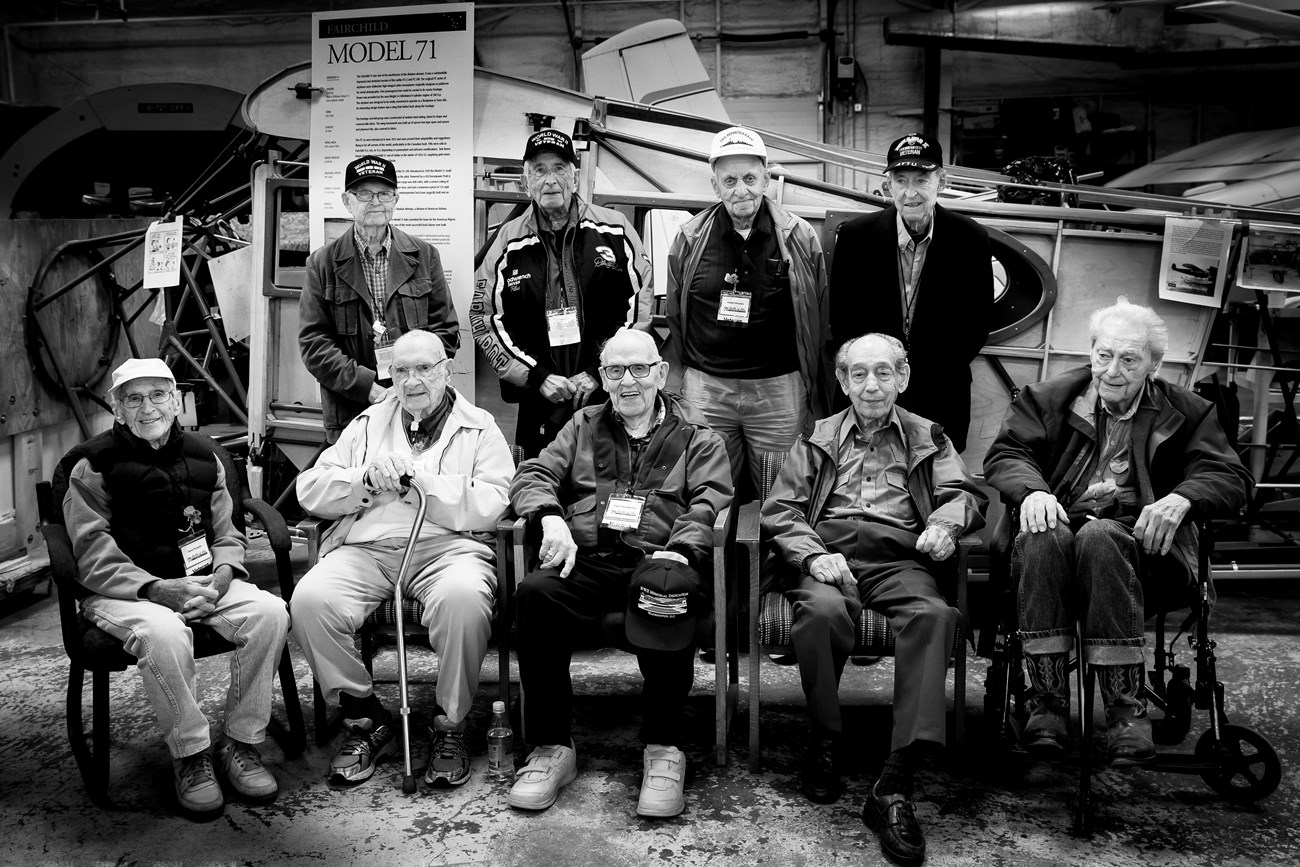
Lisa Hupp/USFWS
Allan Seroll, 106, of Brookline, MA - Army Signal Corps - Battle for Attu
John Tripp, 102, of Colorado - 87th Mountain Infantry Regiment, 10th Mountain Division - Liberation of Kiska
Paul Schaughency, 100, of Pittsburg, PA - Adak Post Headquarters
Raymond Taylor, Sr., Sergeant First Class, 98, of New Jersey
Dale A. Nelson, 95, of Rancho Santa Fe, California
William “Bill” Greene, 97, of Colorado - Seabee
Ralph Piland, Seaman First Class, 96, of Colorado - USS Astute AM 148
James Glazener, 95, of Texas
Richard Cilley Bartlett of Severna Park, MD, US Naval Aviator, Kiska
George Hamilton of Alabama, US Navy, USS King
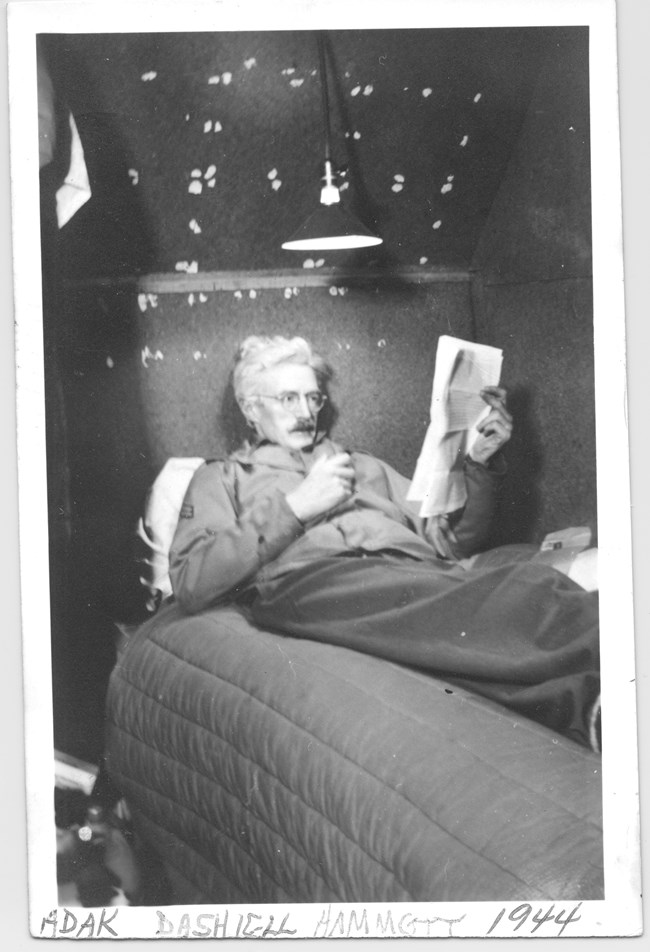
Courtesy of Frank Carnes
War has a way of fostering creative endeavors. Earnest Hemingway, J. R. R. Tolkien, and A. A. Milne all served in the First World War and went on to share their creativity through the written word. Hemingway gave us a look into his experience driving ambulance in Italy. Milne took us on the adventures of Winnie the Pooh and his friends of the Hundred Acre Wood. Tolkien created a whole world separate from our own with similar problems of jealousies, extraordinary feats or bravery, and an improbable fellowship that carried out an impossible mission.
World War II was no exception. Kurt Vonnegut wrote Mother Night and Slaughterhouse Five; J. D. Salinger, The Catcher in the Rye. Authors could be found in every corner of the war, even the Aleutian Islands.
When Dashiell Hammett rejoined Army in the 1940s -- he had served during the First World War as an ambulance driver -- he had completed five novels, dozens of short stories, and four stories for film. He was certainly accomplished and well known. At the age of forty-eight, he enlisted and was sent to Alaska with an intelligence unit.
Hammett and Colondy wrote: “Modern armies had never fought before on any field that was like the Aleutians. We could borrow no knowledge from the past. We would have to learn as we went along, how to live and fight and win in this new land, the least known part of our America.” They could not have been more right about the situation plaguing both sides in their struggle for dominance along the Aleutian Island chain. Both sides saw occupation of key islands to be crucial in their efforts to maintain dominance in the Pacific--although, after the Japanese failure at Midway, having a northern outpost in the Pacific no longer fit into a grand strategy. It was now a secondary concern with limited resources. While the Japanese did not consider the occupation of the Aleutian Islands to be a priority, their presence meant that Americans and Canadians would need to divert resources to the remote islands.
The authors take readers though the Aleutian Campaign at a zippy pace. They discuss American reconnaissance efforts and the struggle posed to the Japanese by regular Army Air Force and Navy patrols. The weather, perhaps surprisingly, was not mentioned as much as in other publications about the area.
The work was beautifully illustrated by Sergeant Harry Fletcher with several maps to give readers some context for the place names being used and where they rest in relationship to Japanese home islands. Critically, some of the Aleutian Islands are closer to mainland Japan than they are to the Alaskan mainland.
Hammett, the seasoned author, went on to work as a member of The Adakian writing staff. The newspaper covered stories ranging from presidential travel and military engagements to the Army cooking school established on Adak and the movies playing in the base theater. While he put his skills to use entertaining the troops and providing some normalcy to their daily routine, a younger future author had arrived in the Aleutian Islands.
Gore Vidal was born to a well-to-do family. His father was an early instructor of military aviation at West Point. His family later moved to the Washington, DC area and he attended Sidwell Friends School. He eventually served as a Senate page for his grandfather, Senator Thomas Gore, the first senator from the newly admitted state of Kansas. Senator Gore was blind, and young Vidal read to him and guided him around the Capitol. He was a pacifist and had strong anti-militarism beliefs. These values and experiences undoubtedly shaped the younger Vidal’s outlook. Gore Vidal finished his primary school education at Phillips Exeter Academy in New Hampshire.
When the Japanese attacked Pearl Harbor in 1941, Vidal enlisted with the Army Air Force at the age of 17. After spending his days doing desk work, Vidal decided to take requisite courses to obtain the rank of Warrant Officer (junior grade) to serve in the Transpiration Corps. This rank eventually landed him a post as 1st Mate of the FS-35, an Army Freight and Supply ship based at Dutch Harbor. Toward the end of the war Vidal was diagnosed with rheumatoid arthritis. The unwelcome news meant a reassignment to mess officer. Gore, however, had been writing away. At the conclusion of the war, his first novel Williwaw, which follows the crew of an Army supply ship, was published in 1946.
Both men were lightning rods for their political leanings. Hammett, an early anti-fascist, was a registered Communist. Following the war, he became a target of Senator Joseph McCarthy’s Red Scare and his books, which had sold incredibly well, were blacklisted and pulled from public libraries. Vidal, who continued to write, was criticized for The City of the Pillar which depicted a young man’s realization of his own homosexuality. While the book landed him on the blacklist, he continued to write under a pseudonym and was able to build his bibliography. He later wrote plays, historical fiction, and was a screen writer. Notably, he worked on Ben-Hur and Billy the Kid. During this time he gained mainstream notoriety for articulating the opposite side to political arguments made by another well-born World War II veteran and the founder of the National Review, William F. Buckley, Jr. Vidal unsuccessfully ran for the U.S. House of Representatives and the U.S. Senate.
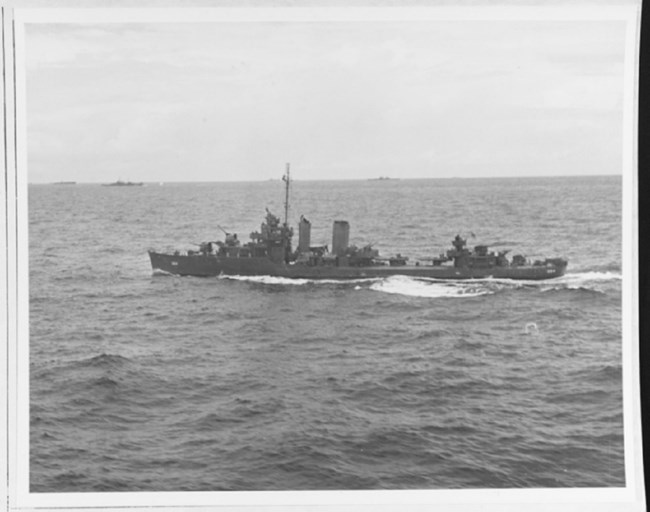
U.S. Navy Photograph 80-G-376093, National Archives and Records Administration, Still Pictures Branch, College Park, Md
“Join the Navy and see the world!” That’s what the posters said. In many ways they weren’t wrong. During the course of the war, US Naval vessels traversed the oceans and took their crews to far-off distant shores. The crew of the USS Monaghan (DD-354), a Farragut class destroyer built at the Boston Navy Yard in Massachusetts, participated in several areas of operation during their time in the Pacific Theater of Operations.
The Monaghan was part of World War II from the very beginning. On the morning of December 7, 1941 the ship was moored at Pearl Harbor. During the ensuing chaos, the ship spotted a Japanese Type-A midget sub that had made its way into the harbor. As other ships were firing on the sub, the ship’s commanding officer Commander William P. Burford ordered the ship to flank speed in an effort to ram the surfaced submarine, putting the Monaghan between the firing ships and the submarine. The other ships held their fire and awaited the outcome of the gutsy maneuver. The Monaghan send a 5-inch round toward the sub, but missed. The sub fired a torpedo, which fortunately missed not just the Monaghan, but the other ships in the fight.
Cmdr. Burford’s ramming maneuver was a partial success. The ships bow glanced off the sub. The move got the ship close enough, however that depth charges could be dropped. To charges were dropped and detonated in the shallow harbor, sinking the submarine. Burford managed to get the ship out to sea and was later awarded the Navy Cross for “exceptional courage, presence of mind, and devotion to duty and disregard for his personal safety” for his actions that day. Thus ended the Monaghan’s first day at war.
The ship returned stateside and escorted ships from California to Hawaii and then headed to the Solomon Islands in the South Pacific. At the Battle of Midway, the Monaghan screened the Enterprise, later taking part in the fight to save the Yorktown, but was unsuccessful.
The ship and its crew returned to Pearl Harbor on 13 June 1942, days after the Japanese landed on Attu and Kiska. The ship’s new destination were the icy cold waters of the Northern Pacific to join Taskforce 8’s efforts to counter the enemy advance on the Aleutian Islands.
On July 27, the Monaghan took part in its first bombardment of Kiska island. The attack, however, was short-lived. Aleutian fog saw to that. As the ships departed the area, a collision occurred and when the Monaghan investigated, it collided with the Lamberton. The Monaghan set a course for Dutch Harbor where it was repaired and returned to Pearl Harbor for more refitting. The ship and its crew sailed back to California and received orders in February of 1943 to return to the Aleutian Islands.
Intelligence soon reported that the Japanese were making an effort to reinforce their soldiers on Kiska. The Monaghan along with several other ships under the command of Capt.Bertram J. Rodgers, were sent to intercept the enemy near the Komandorski Islands. Both sides could see each other--the ships were in sight of each other, the last time this would occur in a naval battle. The Japanese were the first to open fire that morning and soon every ship that had a chance of reaching a target was sending rounds down range.
A series of maneuvers ensued, smoke was made by several American ships to block movements and protect damaged vessels in the deluge of shells. Rear Adm. Charles H. McMorris, who was at the battle later recalled that the Bailey, Coghlan, and Monaghan looked as though they were “smothered with splashes… It was incredible that they should survive.
”At nearly four hours of fighting, seven American sailors were dead and twenty were wounded. The Japanese suffered fourteen dead and twenty-six wounded. The Monaghan survived the encounter unscathed. She had fired over 200 5-inch shells and 48 40-millimeter rounds. The Salt Lake had been hit and took on water. The Bailey and the Coghlan were also damaged.
McMorris ordered the Salt Lake and the Bailey to Adak for repairs. The remainder of the ships made for positions near Holtz Bay to cut off any reinforcement attempts on Attu. Later that year the Monaghan joined other ships in bombardments of Kiska.
After the Allies recaptured Attu and Kiska from the Japanese in 1943, patrol missions were a regular occurrence out over the Bering Sea. Both the Navy and Army Air Force were responsible for having planes in the skies to watch of potential enemy activity. Keeping track of these aircraft was a challenge. To help identify which plans belonged which side, Identification Friend or Foe (IFF) systems were installed on the aircraft. Aircrews need to switch this equipment on that would transmit a special frequency which constantly changed. The team on the ground would then be able to tell if they were friendly or otherwise.
The Navy pilots sometimes, or according to 1st Lieutenant Bruce Hubbard of the 18th Fighter Squadron, constantly, forgot to turn on their IFF system. When the aircraft failed to respond, the P-40 Warhawks were scrambled to intercept, just in case. When Lt. Hubbard and his fellow pilots would find the slow, friendly aircraft they would “do slow rolls in front of them just to give them a little turbulence to fly through,” he recalled. “And then they'd get mad, and they'd complain about that. And we would just smile sweetly and say, ‘Well if you had turned your IFF on that wouldn't have happened.’”

Bruce Hubbard
In the next few editions of the Williwaw, readers should watch for excerpts from the declassified diary of Battery E of the 206th Coast Artillery written by Private Louie W. Jenogor. The diary is housed at the National Archive at College Park, Maryland.
“Section #1 - Up at 4:00 A. Rest up at 6:45 A. Storm had abated during night: Day broke very windy, but dry. Wind so strong during night part of mess hall blown down. Got new tent, gave it to Cpl. Stooge’s squad. Took his tent for the mess hall. Breakfast at 7:00A, dinner at 12:30P. Just before dinner men given double alert; changes to single alert after 15 mins. Supper at 5:30P.”
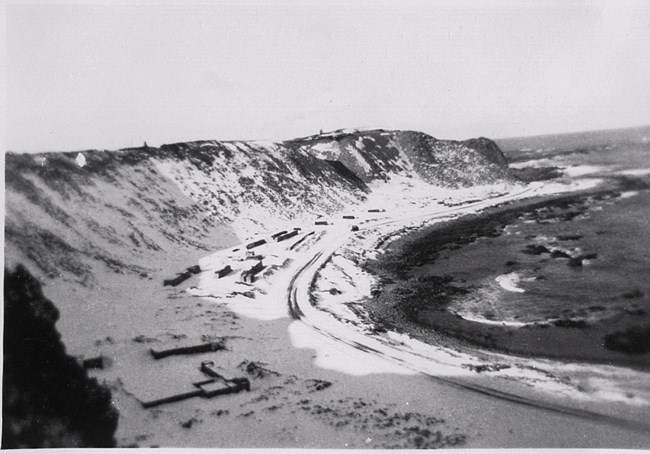
Robert Davis
In late November 1942, Colonel Lawrence V. Castner sat at his desk at Fort Richardson near Anchorage studying the latest intelligence reports on Japanese naval movements. As the G-2 in charge of intelligence for the U.S. Army’s Alaska Defense Command, he was responsible for assessing the latest information for Major General Simon Buckner and for attempting to decipher the enemy’s intentions during the Aleutian campaign. Castner believed that the Japanese military could not maintain their foothold on Attu and Kiska Islands without establishing an air base to protect their vulnerable supply line from American forces. He now had new intelligence that a Japanese convoy was enroute to Shemya Island carrying a large number of engineer troops, he suspected for constructing a new runway. “If this landing force is not destroyed,” Castner warned, “it is probable that Jap[anese] freedom of action not only will be restored to the status of last June, but enhanced by land based aviation support.”
A tiny dot in the North Pacific, Shemya Island is just four miles long and less than three miles wide. While it lacked a natural harbor, the ground was flat, unlike the hilly terrain on nearby Attu Island some thirty-five miles to the west. The Japanese had in fact surveyed Shemya a month earlier and determined it was a “key element” in their strategy for holding the Aleutians. On November 23 (Nov. 24 on the Japanese calendar), the Imperial Japanese Navy’s light cruiser Tama and destroyer Hatsushimo departed from Paramushir Island in the Kuriles, escorting two army transports filled with men and equipment. The expedition, under the command of Major Tokuyi Watanabe, was now enroute to capture Shemya Island.
Second Lieutenant Tokihara Kakutani of Watanabe’s 303rd Independent Infantry Battalion was one of the junior officers on board the army transport ship Montreal Maru. He had been in training for the past year with his reserve unit when the mobilization orders came in late October. As he prepared to leave mainland Japan for Paramushir, he recorded in his diary: “For the first time I feel like I’m actually going into battle.”
Superior Private Hatsusaburo Sasaki noted similar thoughts in his diary. “We learned that our destination was the Aleutians…,” he wrote. “Our hearts beat with excitement and nervousness.” Superior Private Yoshio Yoshioka, a member of the newly formed 33rd Independent Field Anti-Aircraft Artillery Company, described the difficult journey towards Shemya. “Gradually the waves became rough and by meal time everybody is laying down,” he wrote during his first day at sea. Several days later, he added in his diary: “The wind and waves are so rough that the ship is trembling. The famous fog of the North Pacific strikes against one’s face like small rain…”
Intelligence about this approaching Japanese convoy triggered U.S. forces to make a counter move. On November 25, Admiral Robert Theobold ordered the commander of Task Group 8.6 to expedite his fueling at Adak Island and then to immediately proceed to the area near Attu, Agattu and Shemya “to located and destroy enemy units.” On Thanksgiving day, November 26, all six warships of Task Group 8.6 – including Admiral William W. Smith’s flagship USS Detroit – reached Adak and quickly refueled from an oil tanker. At the same time, the cooks in the ships’ galleys prepared a quick turkey dinner for the crews. Then late that evening, the task group sailed towards Shemya in search of the approaching Japanese convoy.
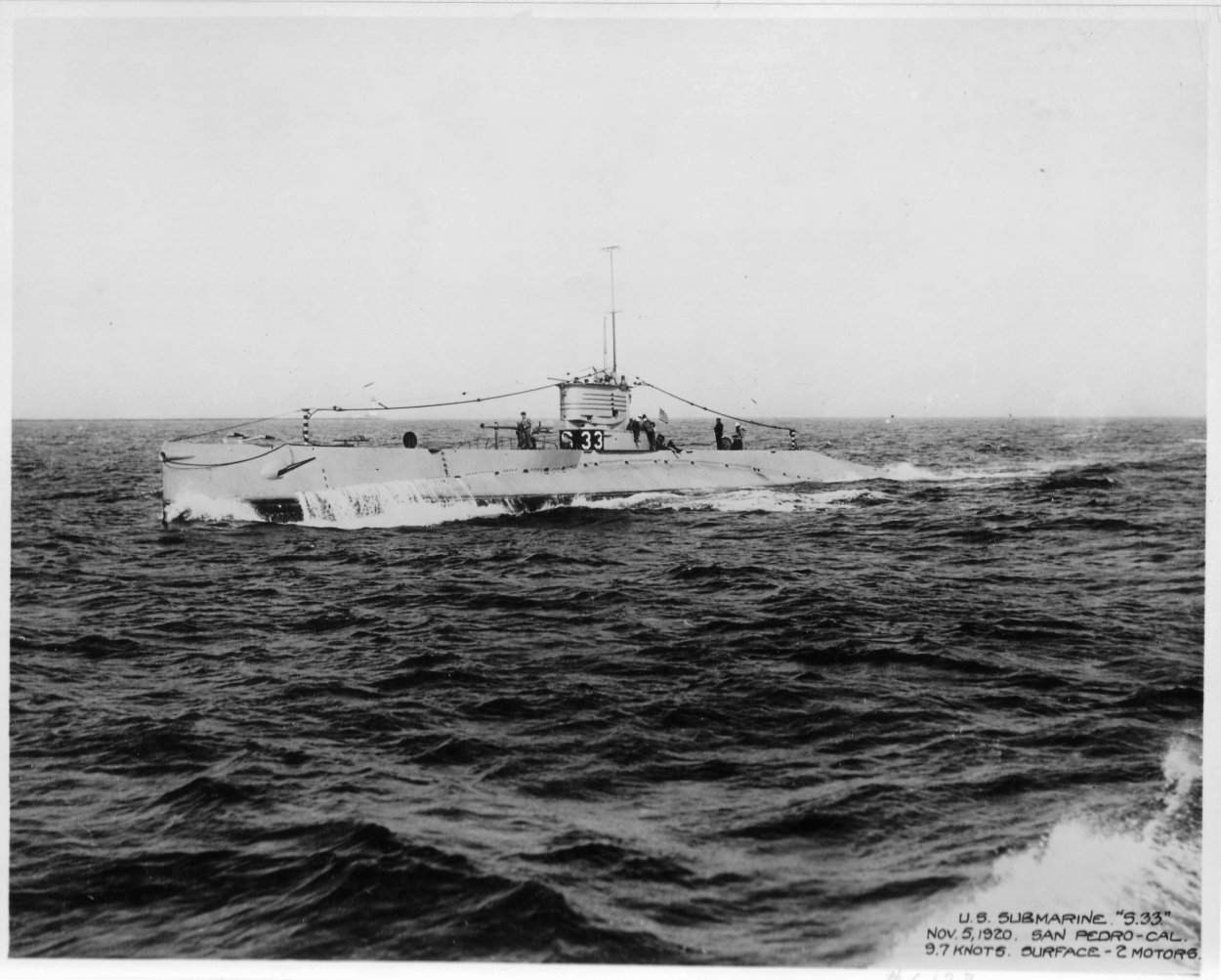
US Navy
Admiral Theobold also had ten submarines assigned to his force, but only one was available to be sent. Submarine S-33, commanded by Commander Walter P. Schoeni, had just completed a series of repairs at Dutch Harbor and was redirected to patrol in the area south of Attu to intercept the convoy. On November 26, S-33 dove and ran submerged “in order to enjoy Thanksgiving dinner.” The following day, the sub reached the Shemya and Attu Islands region.
In addition to dispatching the surface ships and a submarine to find this convoy, Admiral Theobald also directed that the air search be “intensified to the westward,” with the planes taking off as early as possible to time their arrival over Shemya and Attu in the early morning hours when they would have the highest probability of catching the Japanese unloading their ships. On Thanksgiving day, November 26, Lieutenant Charles W. Craven was flying his B-24 “Liberator” on the usual weather reconnaissance flight when he discovered a Japanese transport ship, the Cheribon Maru, unloading supplies at Attu Island early that morning. His radioman immediately communicated their coordinates and four B-26 “Marauder” bombers and four P-38 fighters were dispatched from Adak Island to intercede. While not connected to the Shemya convoy, the Cheribon Maru was one of several Japanese transports that had been delivering new troops and supplies to Attu Island over the past four weeks. Small barges were clustered around the ship as they hurried to unload weapons and supplies, realizing they had now been spotted by an American plane.
Shortly after noon, the Army Air Corps planes arrived over Attu Island. The fighters dived in first, strafing the ship with machine gun fire to clear the deck and the anti-aircraft gun positions. Then came the bombers, flying in low and deliberate. Three of their 500-pound armor piercing bombs hit the Cheribon Maru near the bow, setting off a chain of explosions and sending billows of black smoke into the Alaskan sky. After just thirty minutes, the American planes departed Attu, leaving the transport ship in flames and sinking. Numerous Japanese casualties were reported on the ship and the barges.
Meanwhile on November 27, the Japanese convoy neared Shemya. Here occurs one of the little mysteries of the war that we may never solve for certain. Brian Garfield wrote in his book, The Thousand-Mile War, that an American B-24 flew over this convoy, the Japanese now assuming they had been spotted. The surviving Japanese diaries, however, make no mention of being spotted by an American plane nor do U.S. military records make note of sighting the enemy ships. Garfield’s source for this information is not recorded.
But the diaries do mention spotted a submarine. On board the Japanese transport Montreal Maru, Lieut. Hirosada Kaneko was in command of a platoon of “shipping engineers,” the Imperial Japanese Army soldiers who operated the landing barges that would be used to land men and materiel onto Shemya Island. In his official war diary for that date, he noted that they were roughly 200 or 300 miles west of Shemya when an enemy submarine was spotted and one of their naval escort ships opened fire. Private First Class Tsunejiro Kikuyama also recorded that an enemy submarine was seen in the very early hours that morning. “They say that the enemy sub fired 3 torpedoes at our boat but missed,” potentially just repeating the scuttlebutt circulating among the soldiers down in the ship’s hold. “We counter attacked and the enemy fled.”
But did they actually see an American submarine? Only one sub was out in the western Aleutians that day, Commander Schoeni’s boat S-33. But his official war patrol report filed after returning to Dutch Harbor specifically states that they did not observe any enemy ships that day and their orders had been changed to move their patrol north of Attu Island. Did a Japanese lookout spot a breaching whale in the early morning foggy mist that he mistook for an enemy submarine? We may never know.
The Japanese diaries do note that the convoy continued forward after the supposed submarine encounter. That afternoon, however, the decision was made to turn the convoy around and return to Paramushir Island. Garfield mentioned that they received a radio message from Japan warning of Admiral Smith’s task group moving to intercept them. Perhaps this Japanese intelligence, supplemented by the encounter with a supposed submarine and the news of planes sinking the Cheribon Maru the day before, may have together convinced Japanese leaders that it was too dangerous to continue and they decided to postpone the capture of Shemya Island. A testament to U.S. naval intelligence officers who were decoding many Imperial Japanese Navy communications at this time, Admiral Nimitz radioed Admiral Theobold just hours after the Japanese had ordered the convoy to return: “present indications are that the landing on Semichi [Shemya], planned by the enemy, has been postponed for two or three days.”
The Japanese convoy returned to Paramushir Island on December 2 where the men and supplies were unloaded. Their interest in Shemya soon faded and Major Tokuyi Watanabe’s forces were instead sent to Attu Island to bolster those defenses. Six months later, the U.S. landed on Shemya Island where they did build a runway, still in use today.
Part of a series of articles titled The Williwaw Newsletter.
Previous: Williwaw January 2022
Next: Williwaw September 2023
Last updated: July 18, 2025